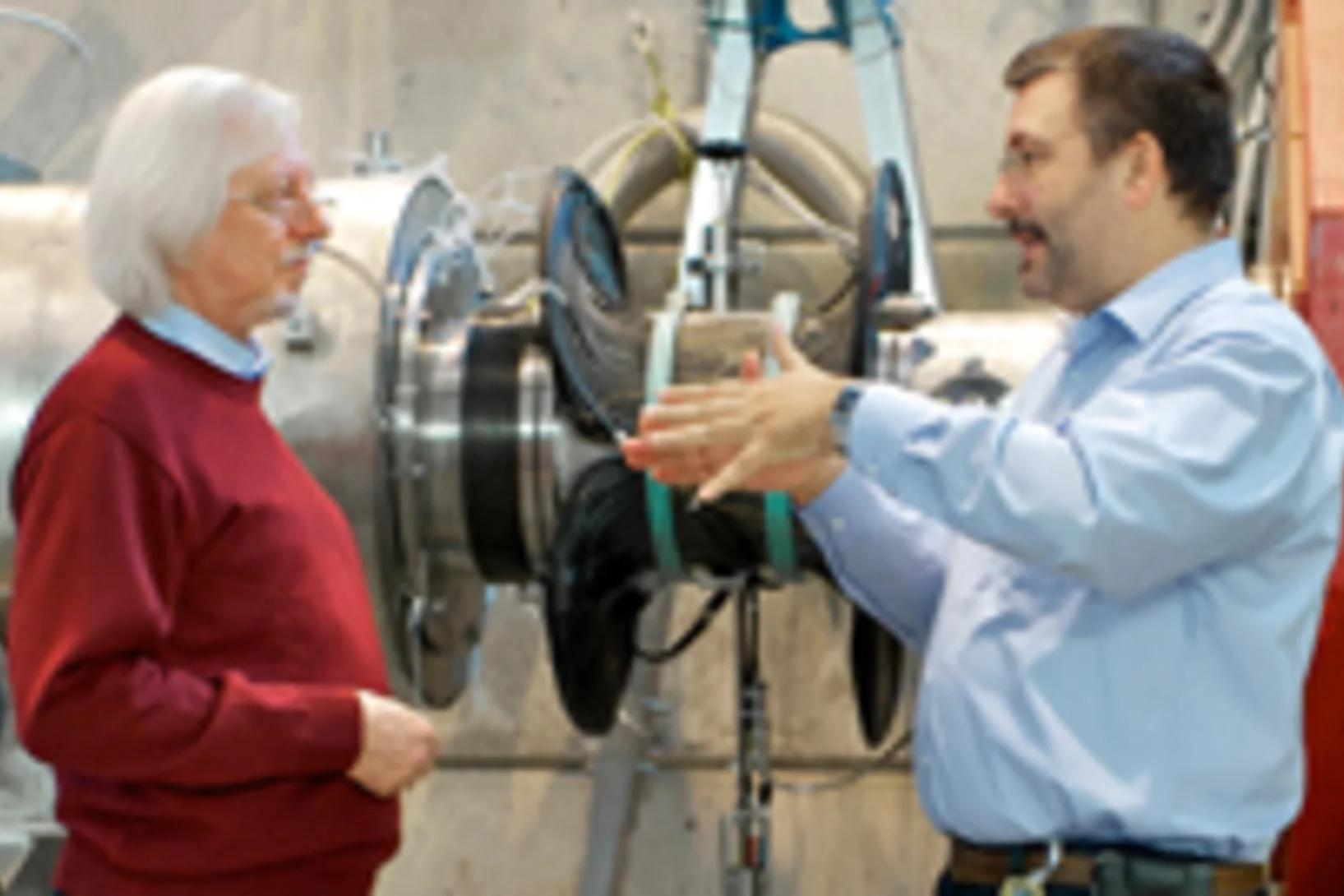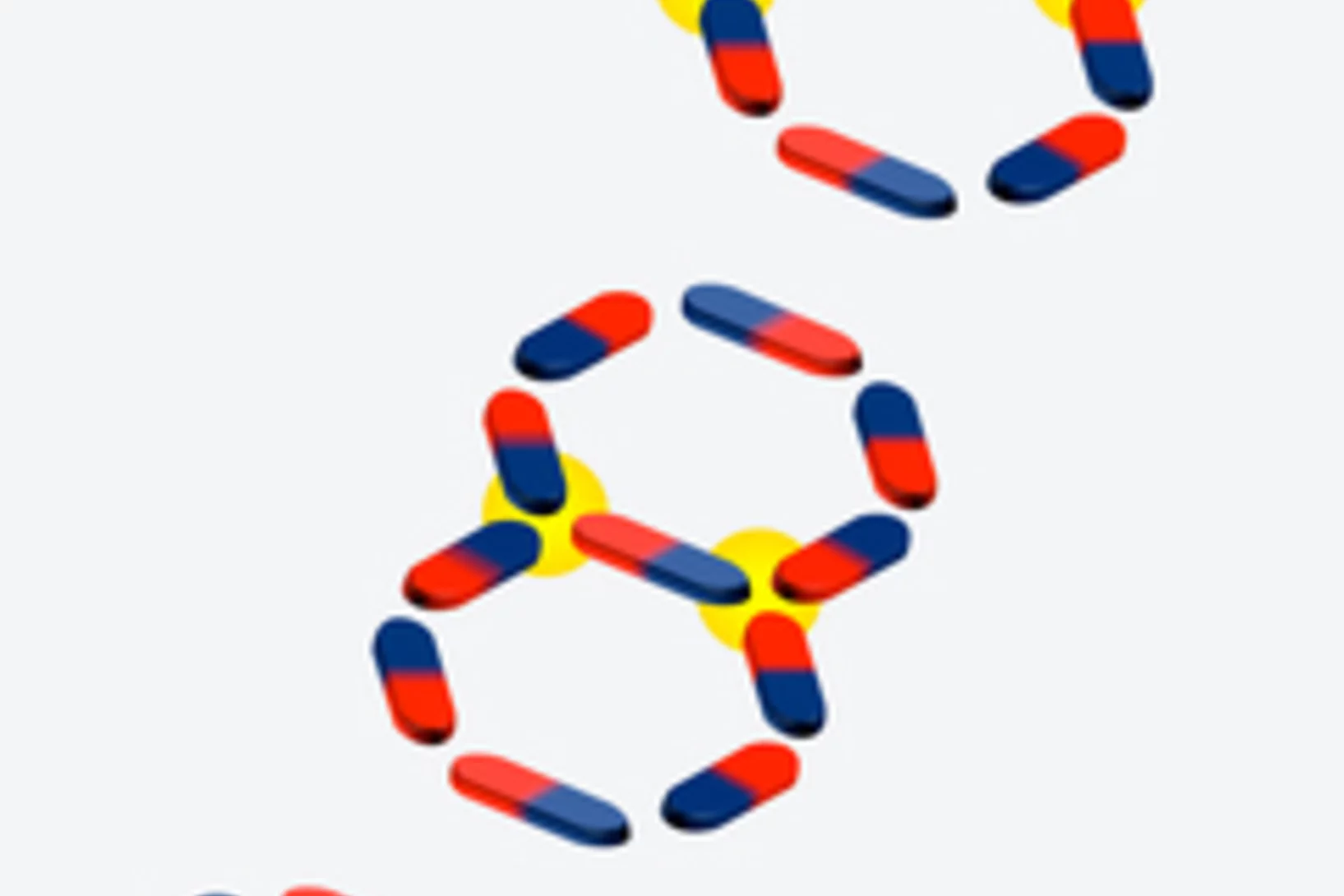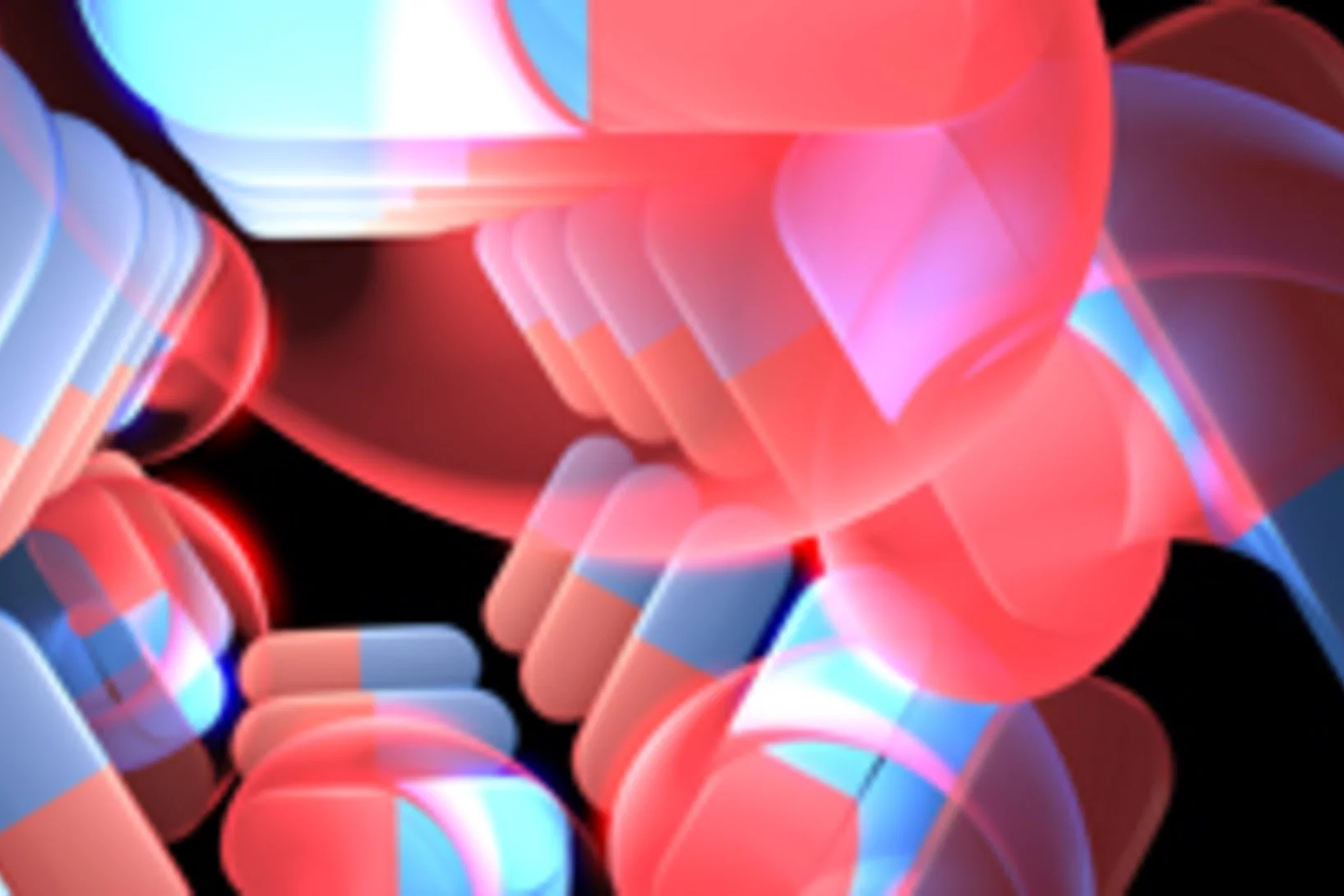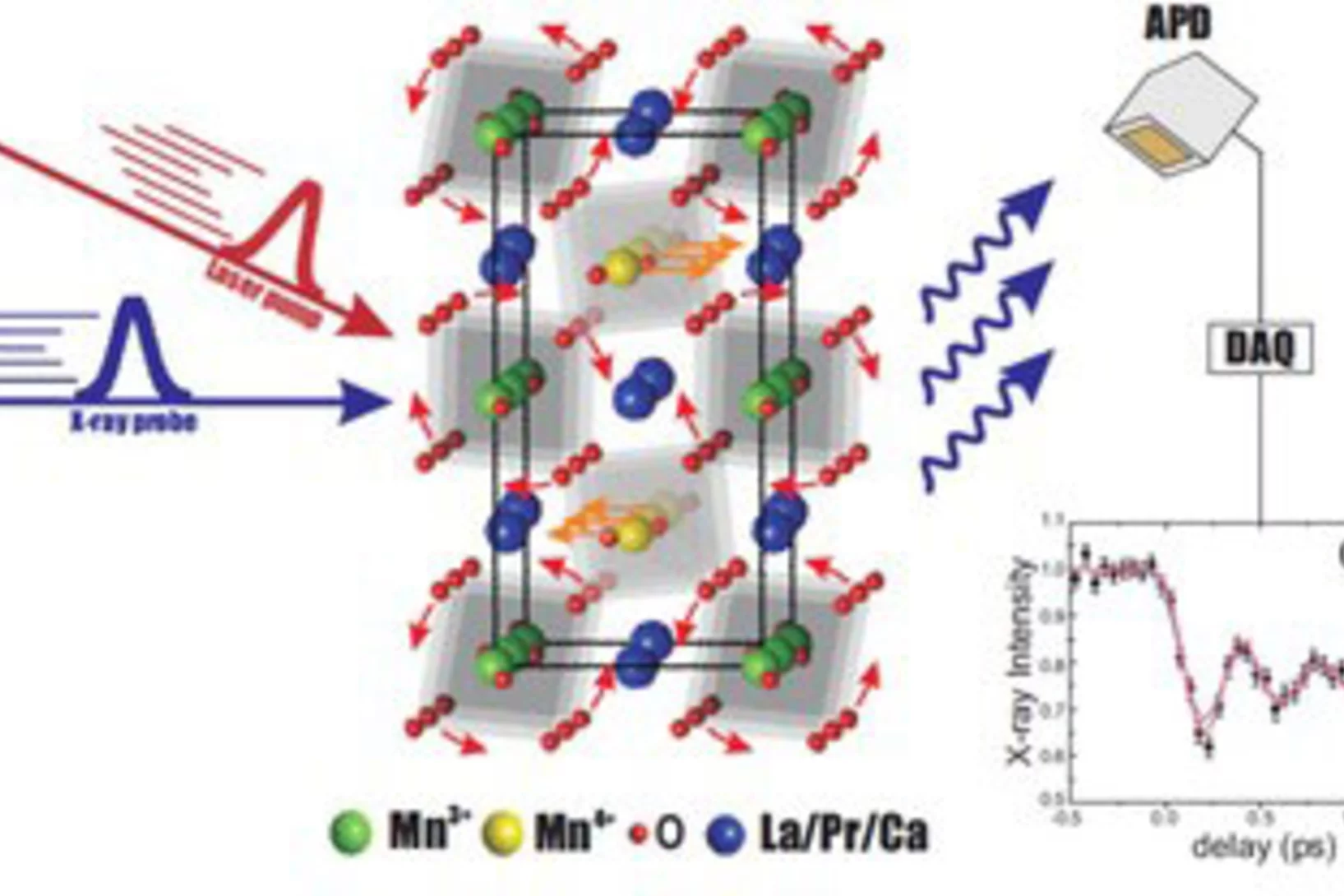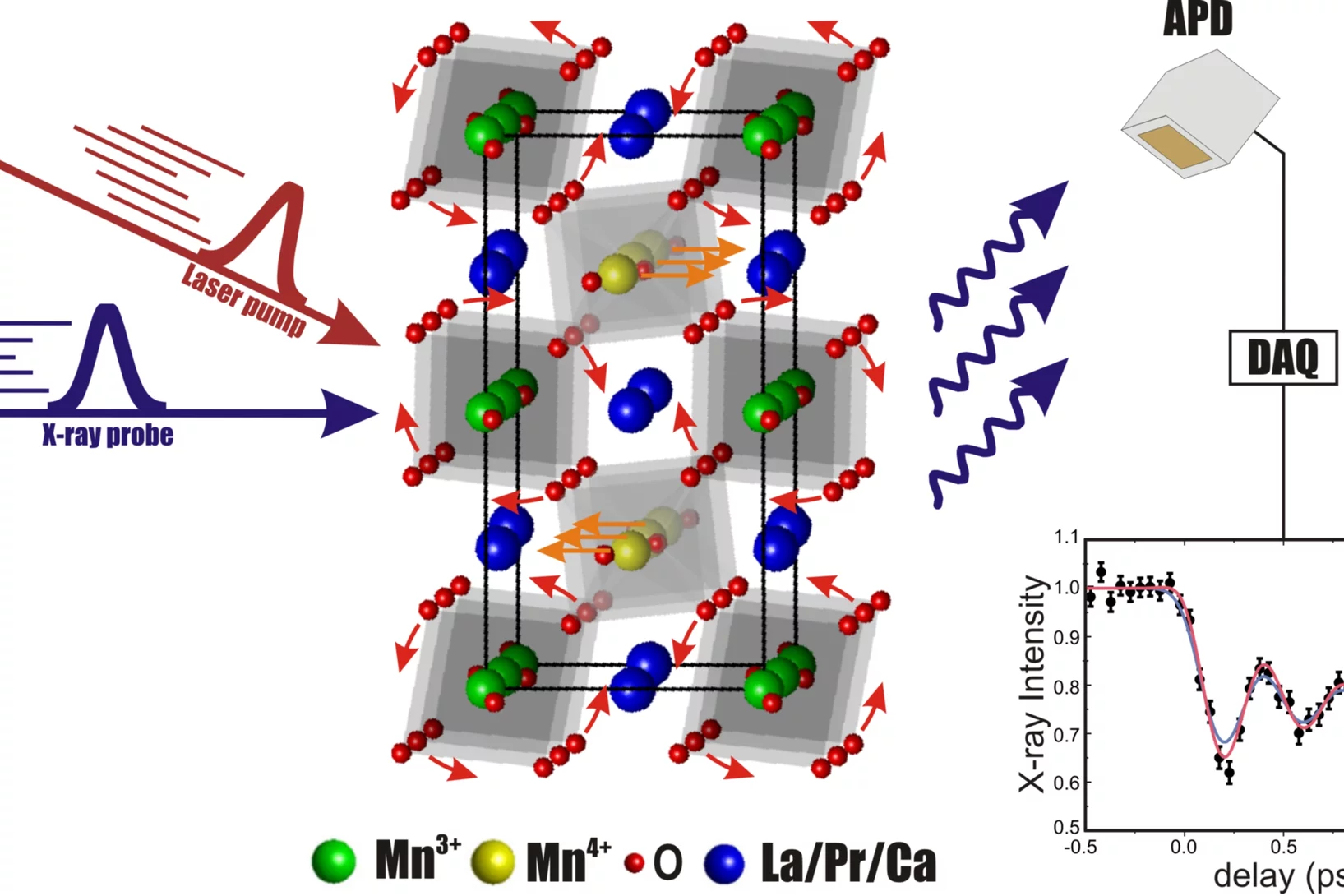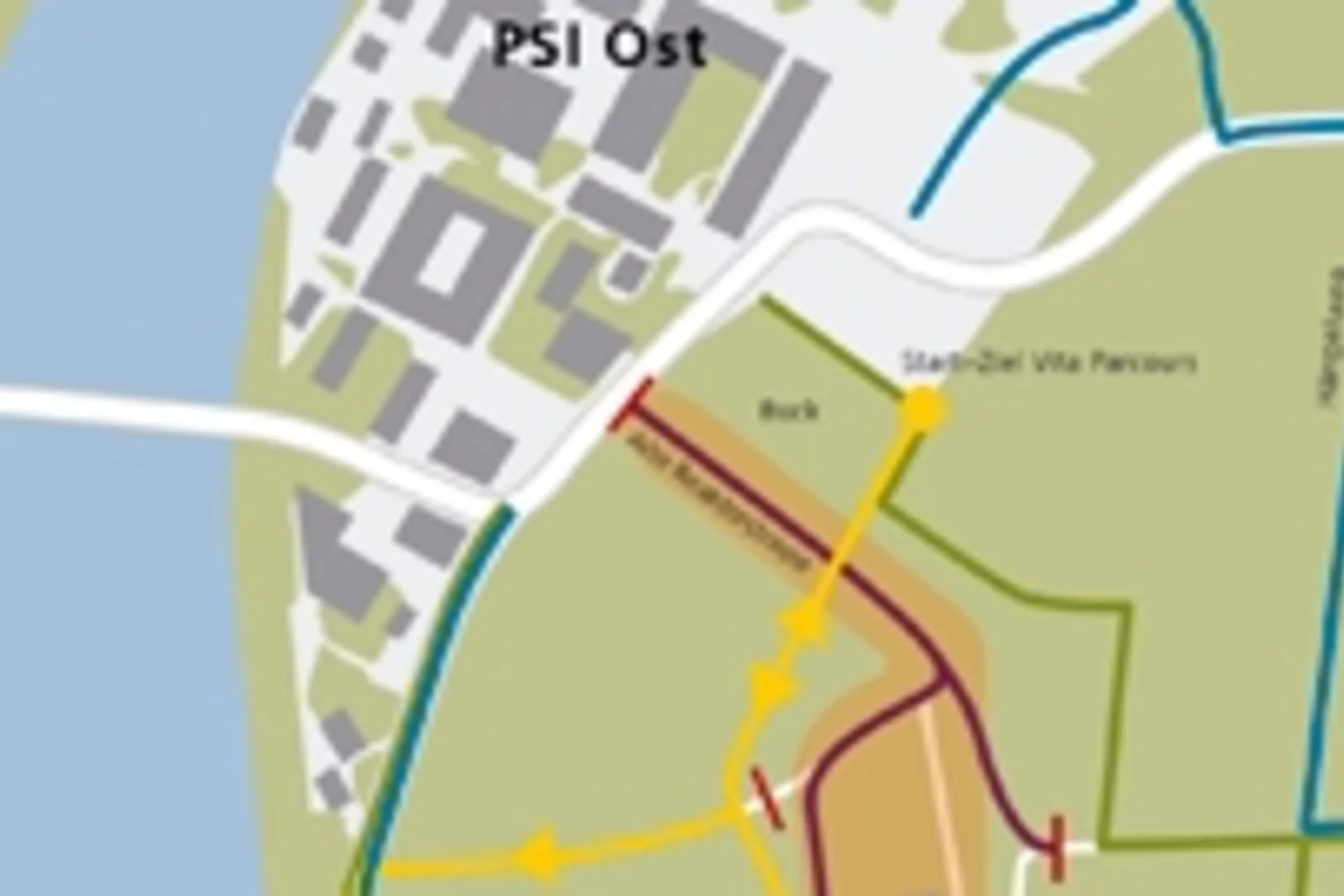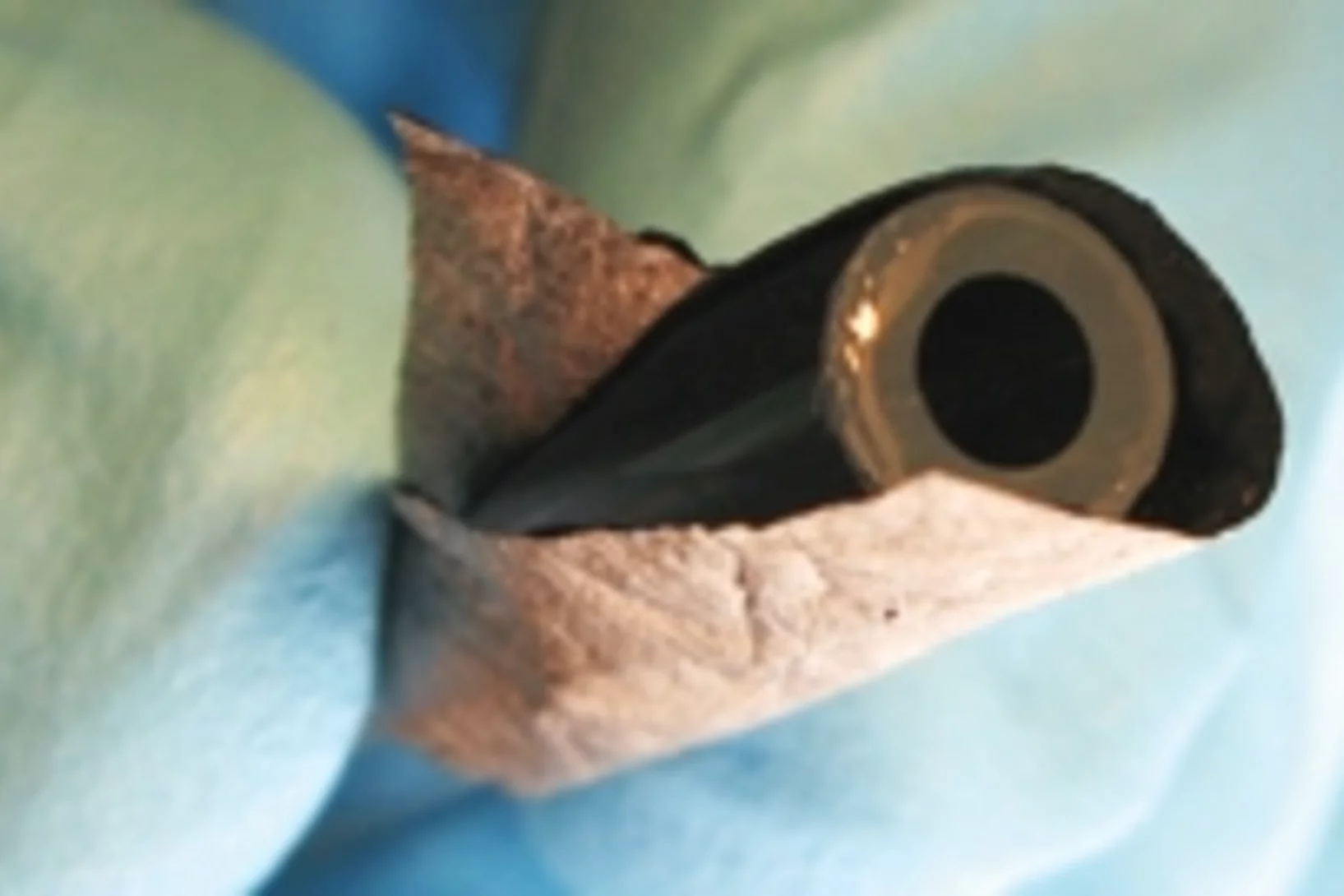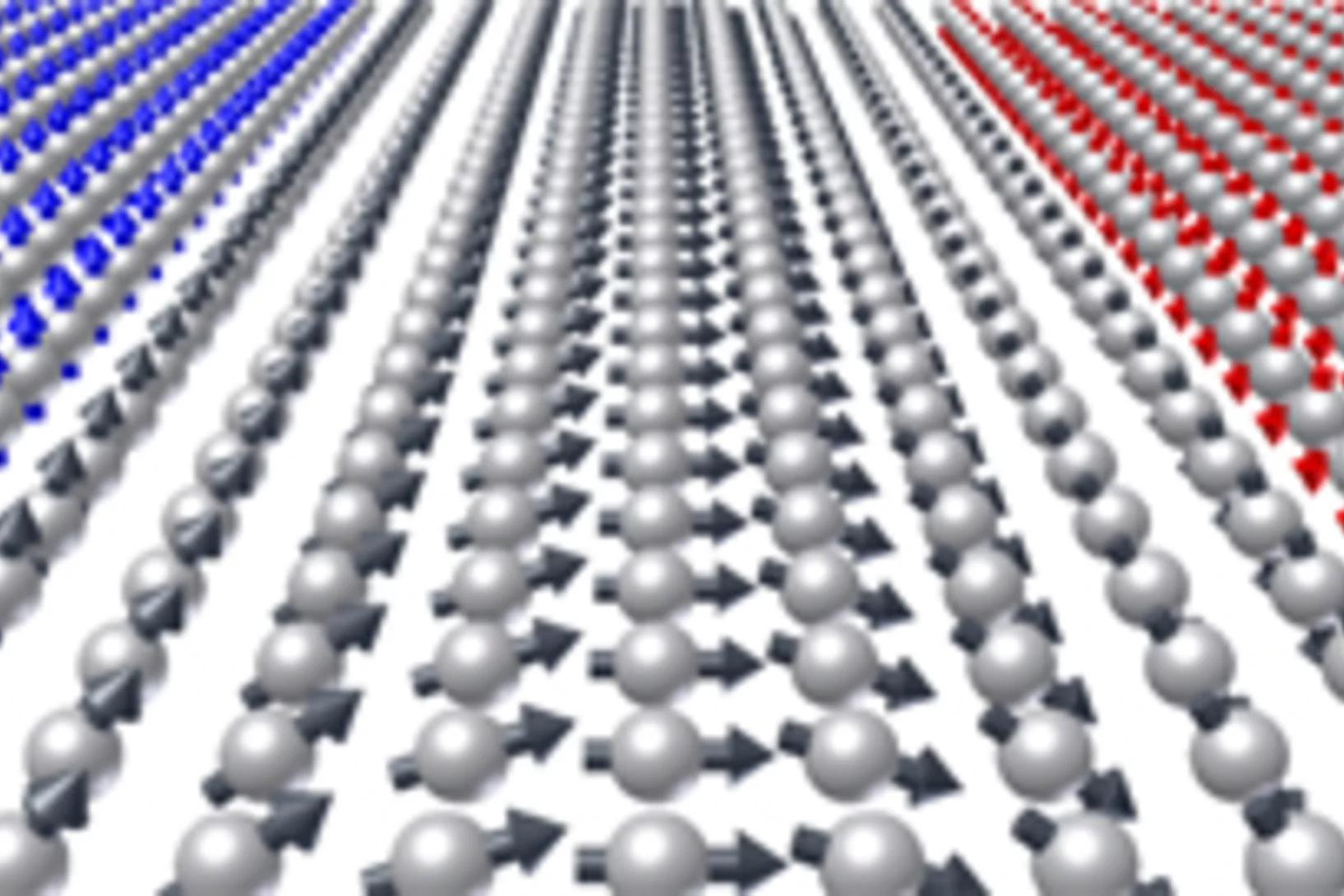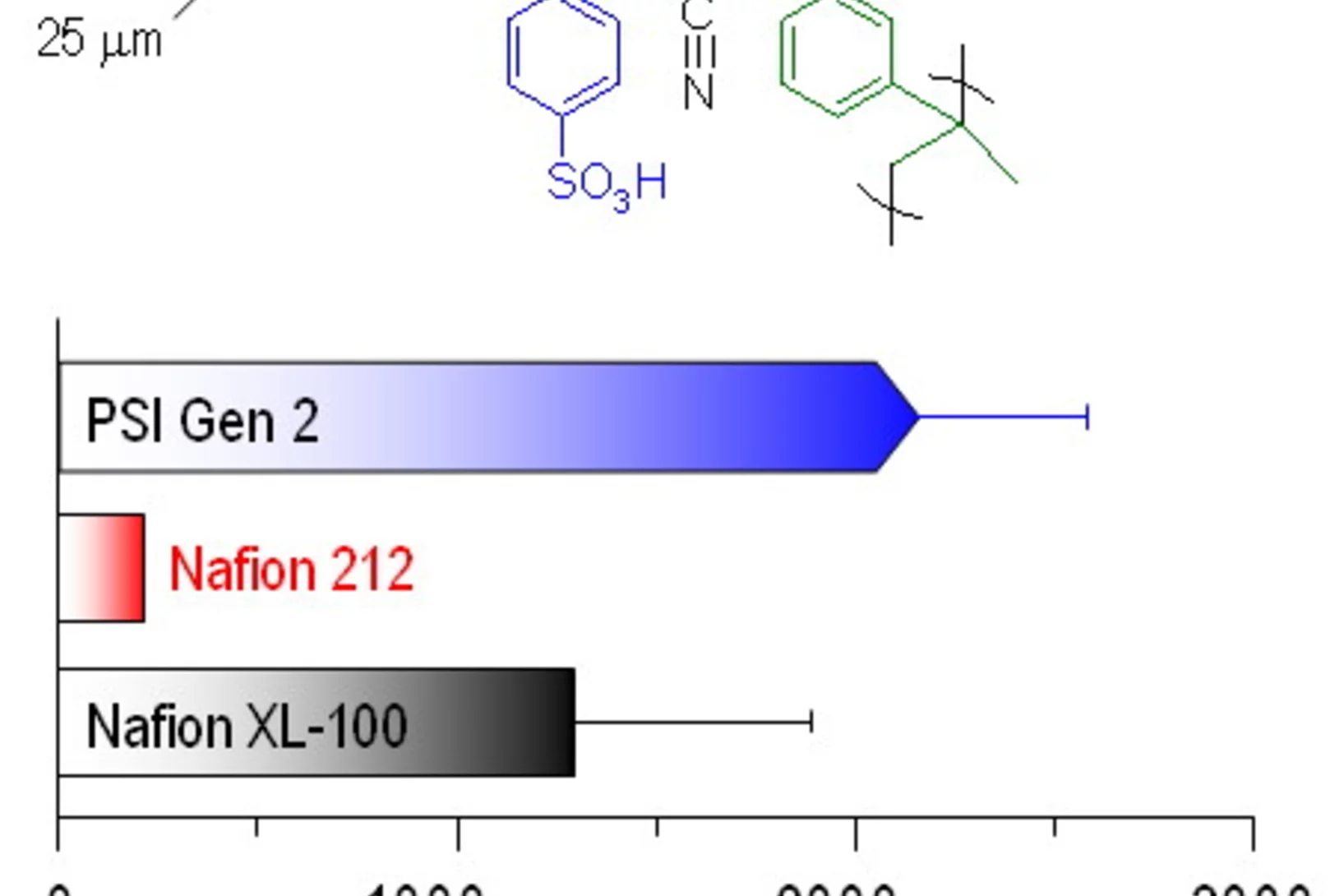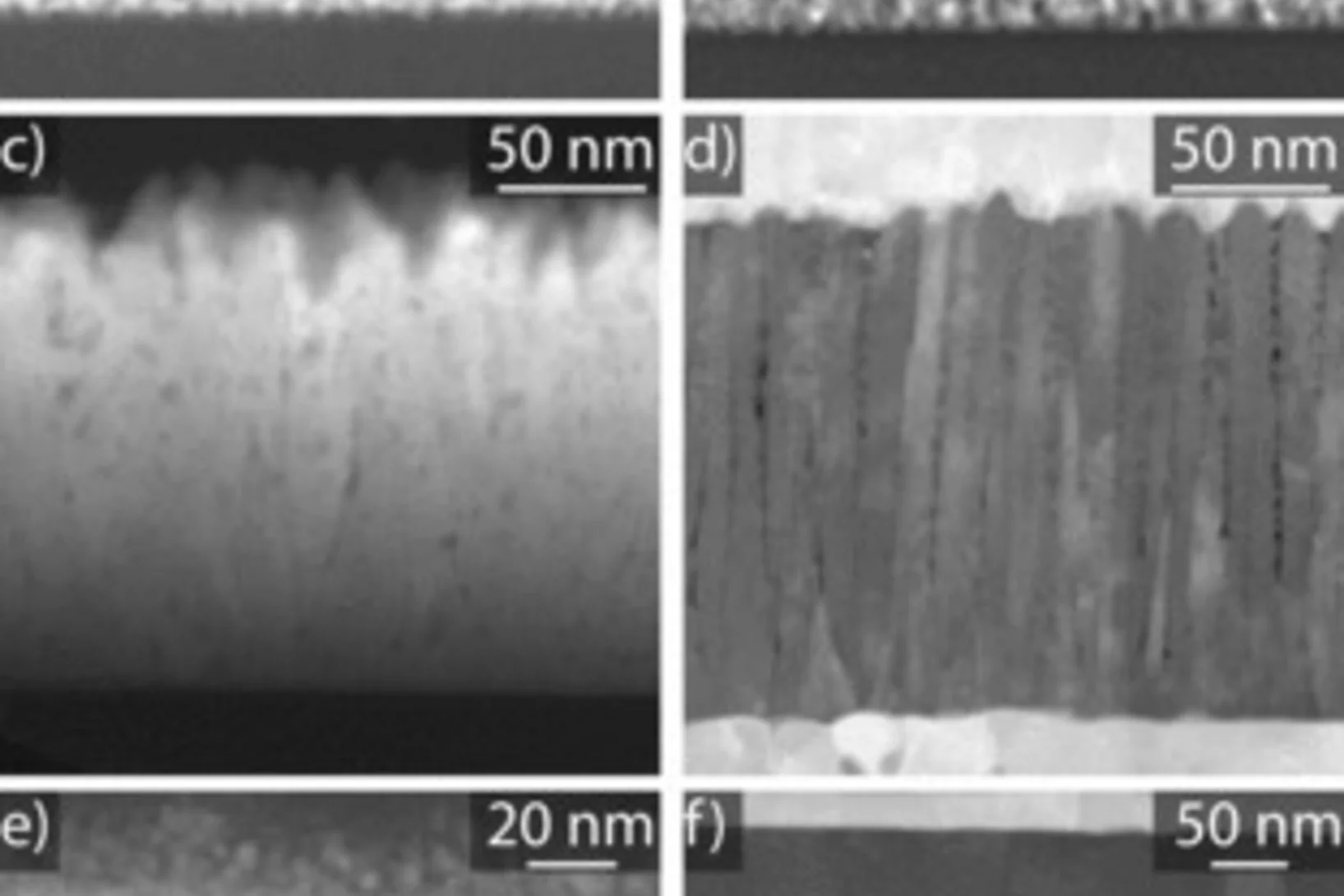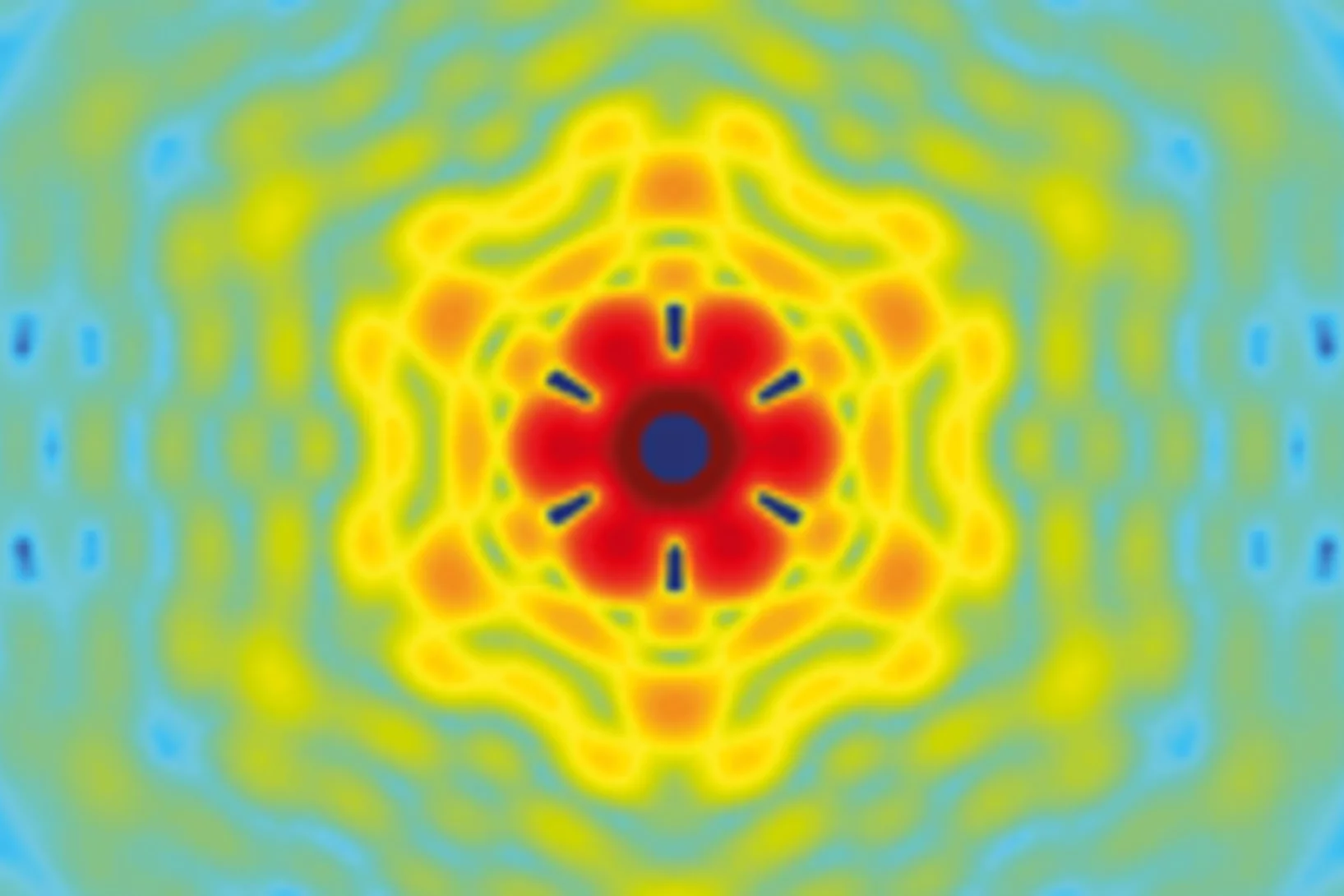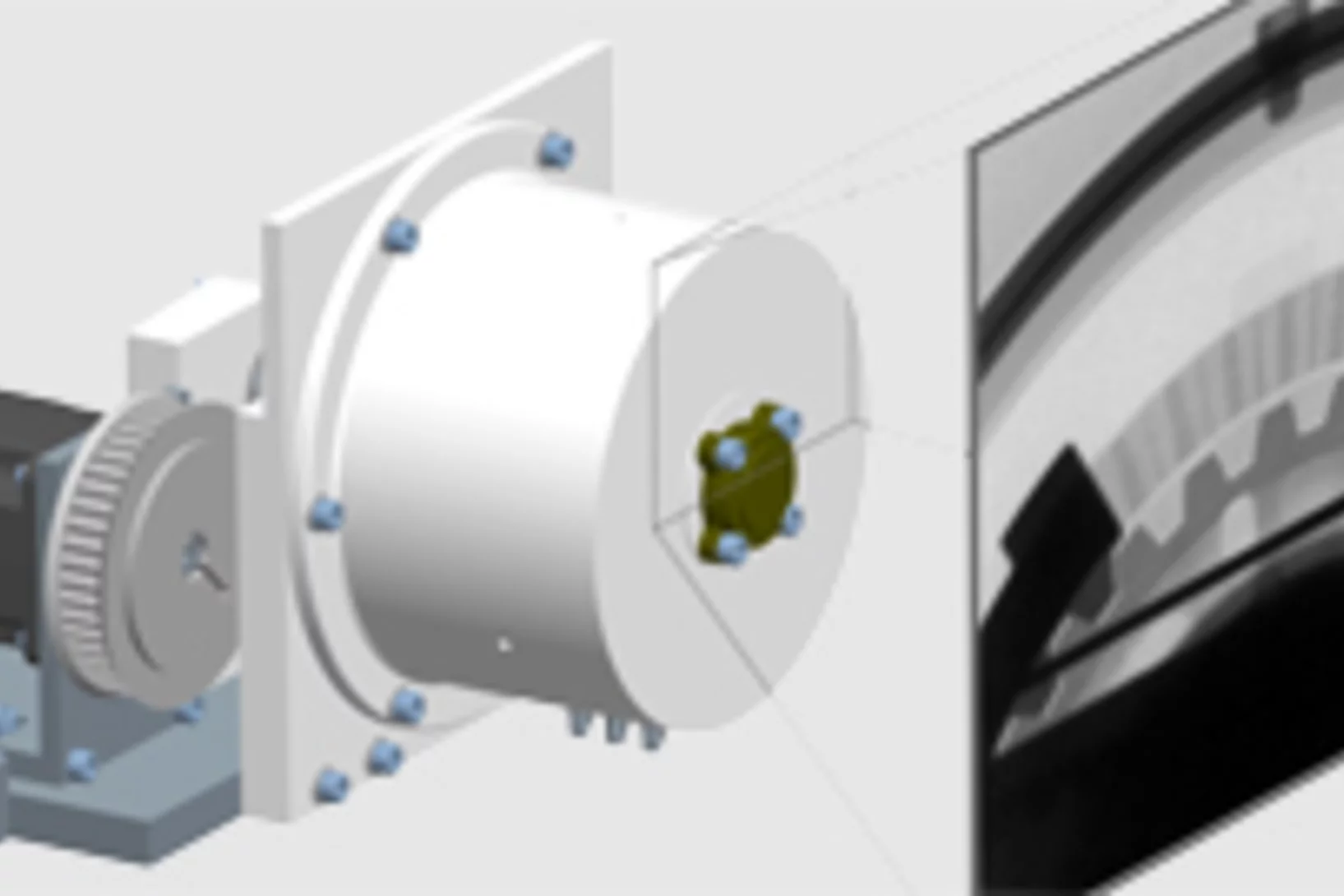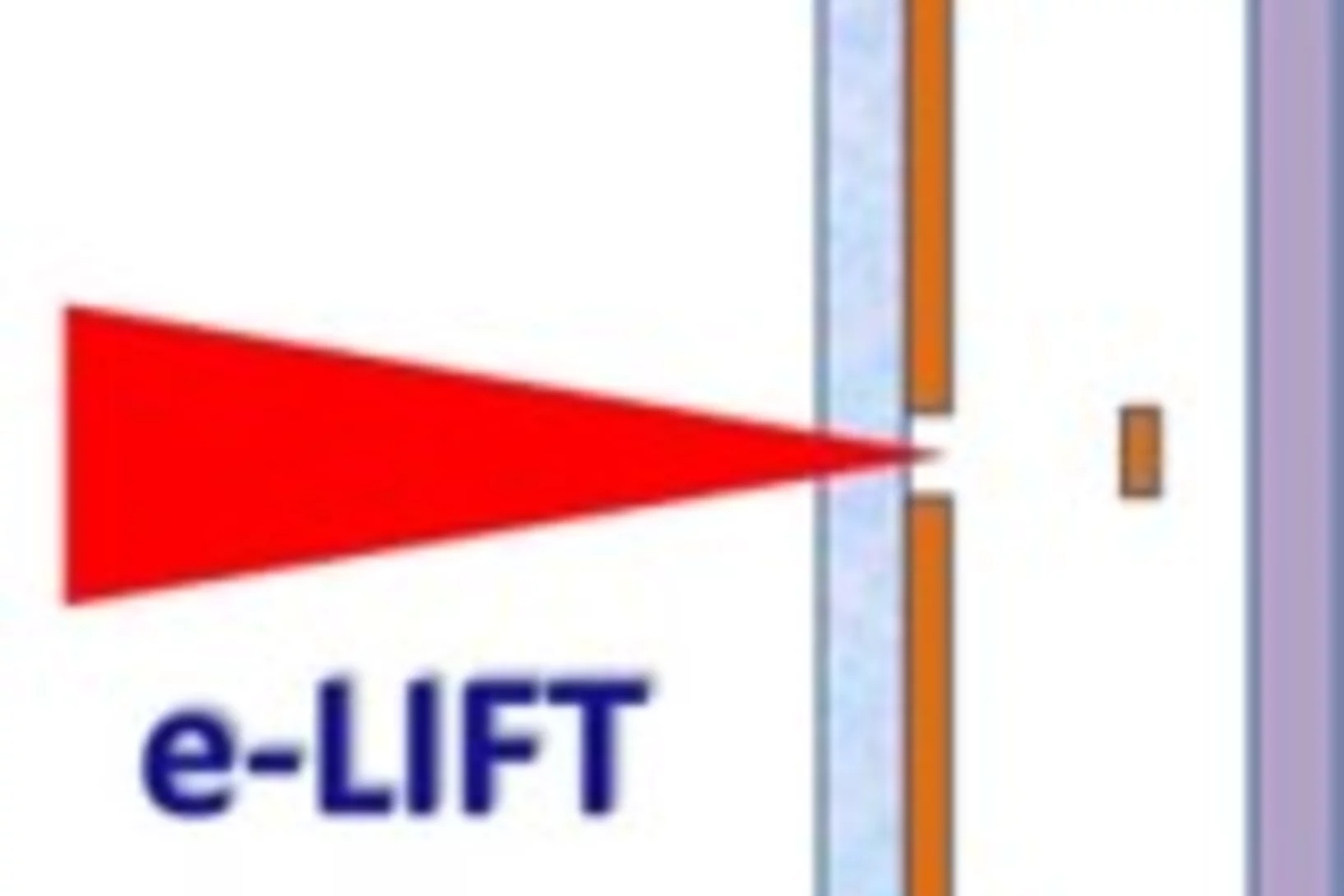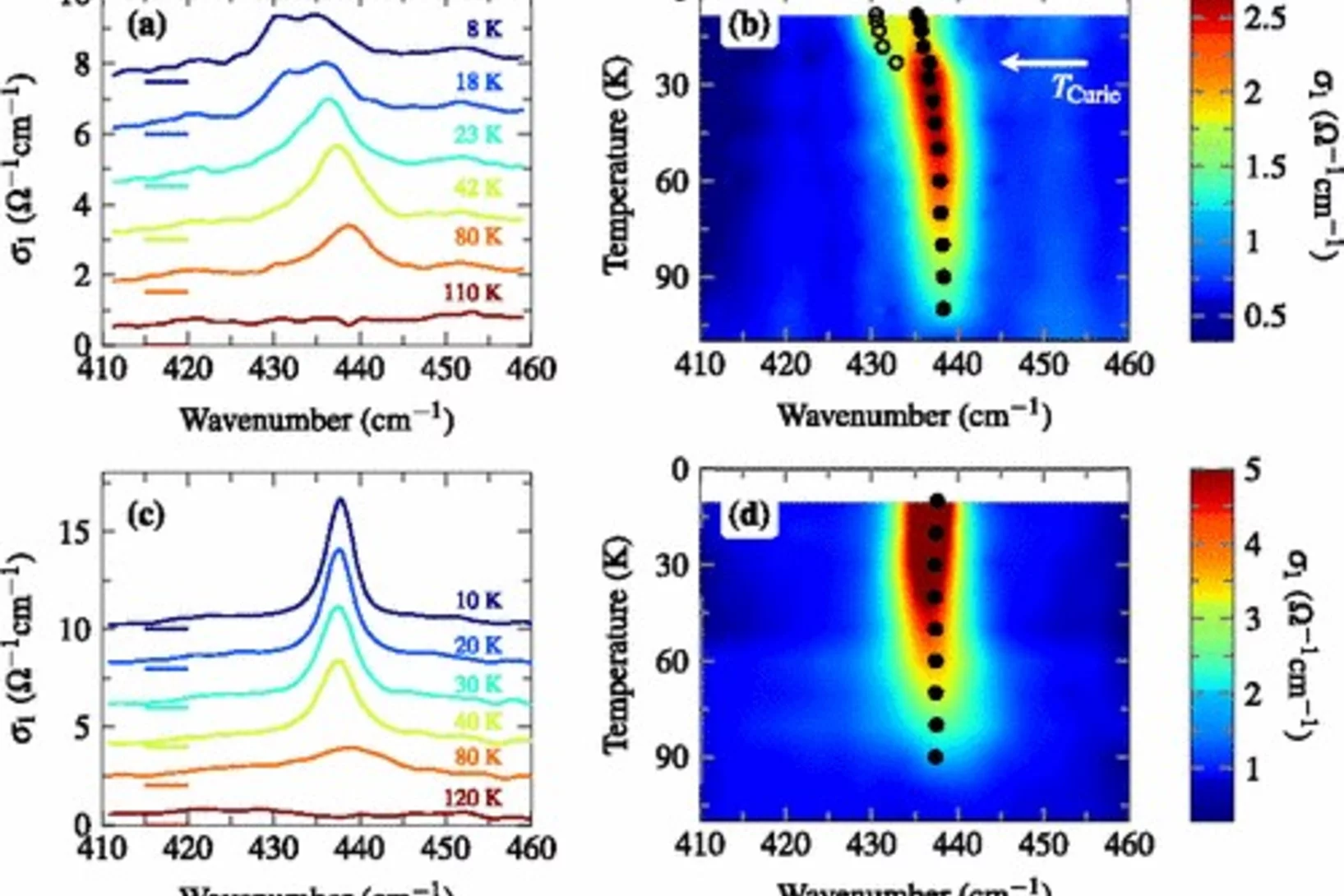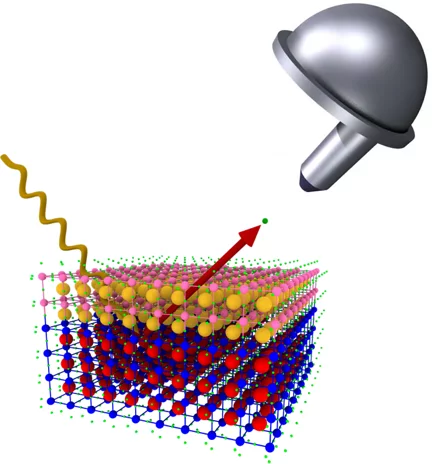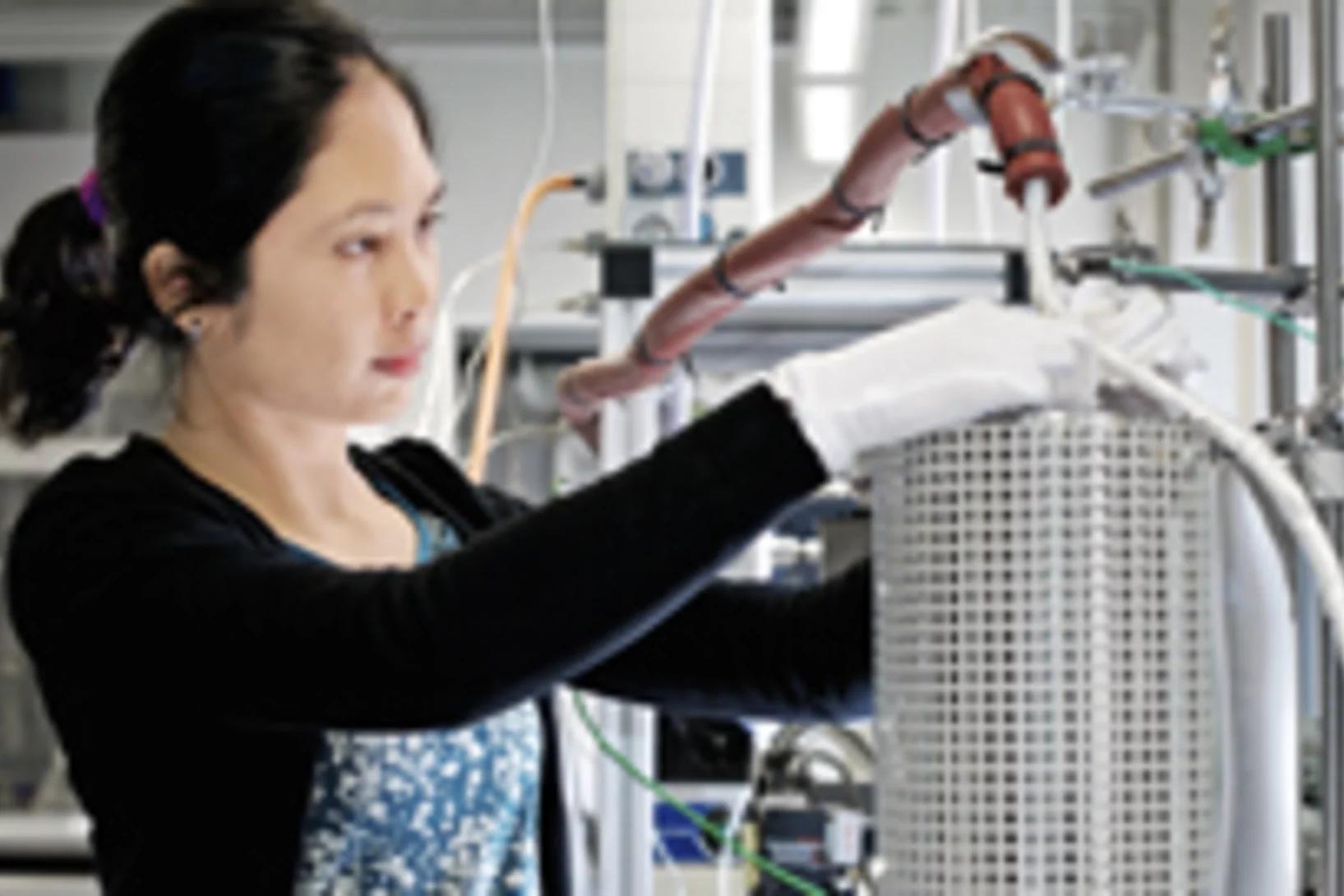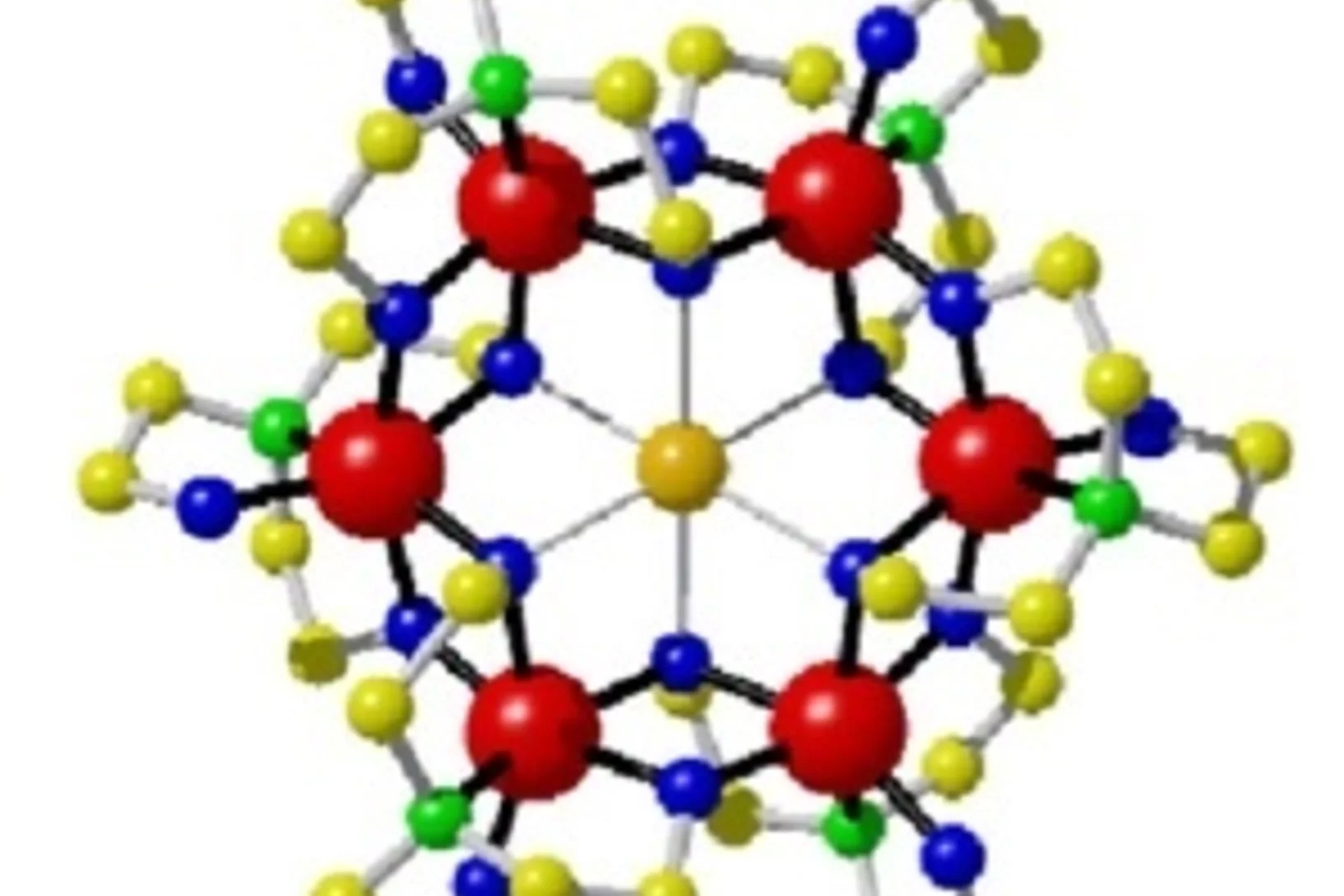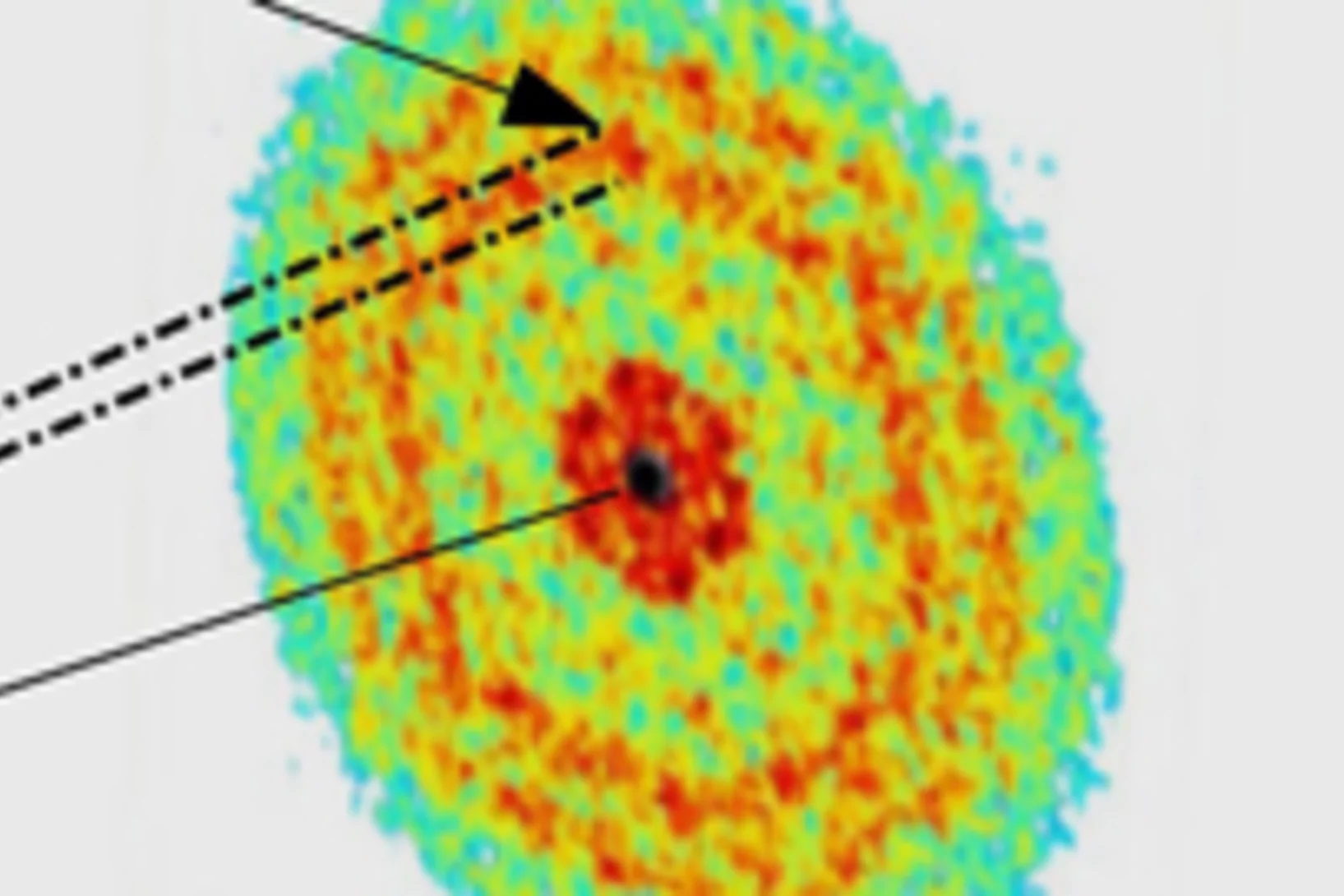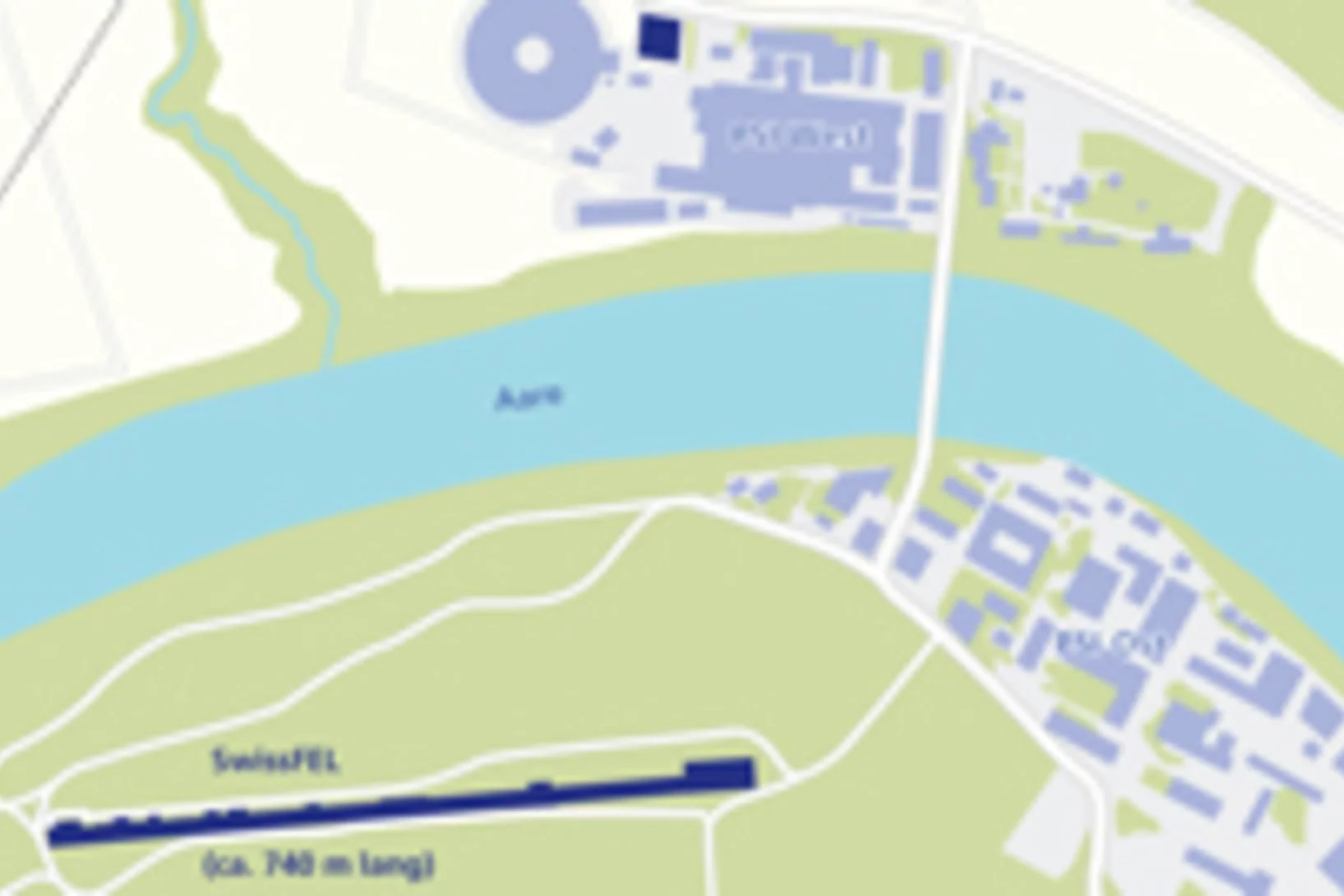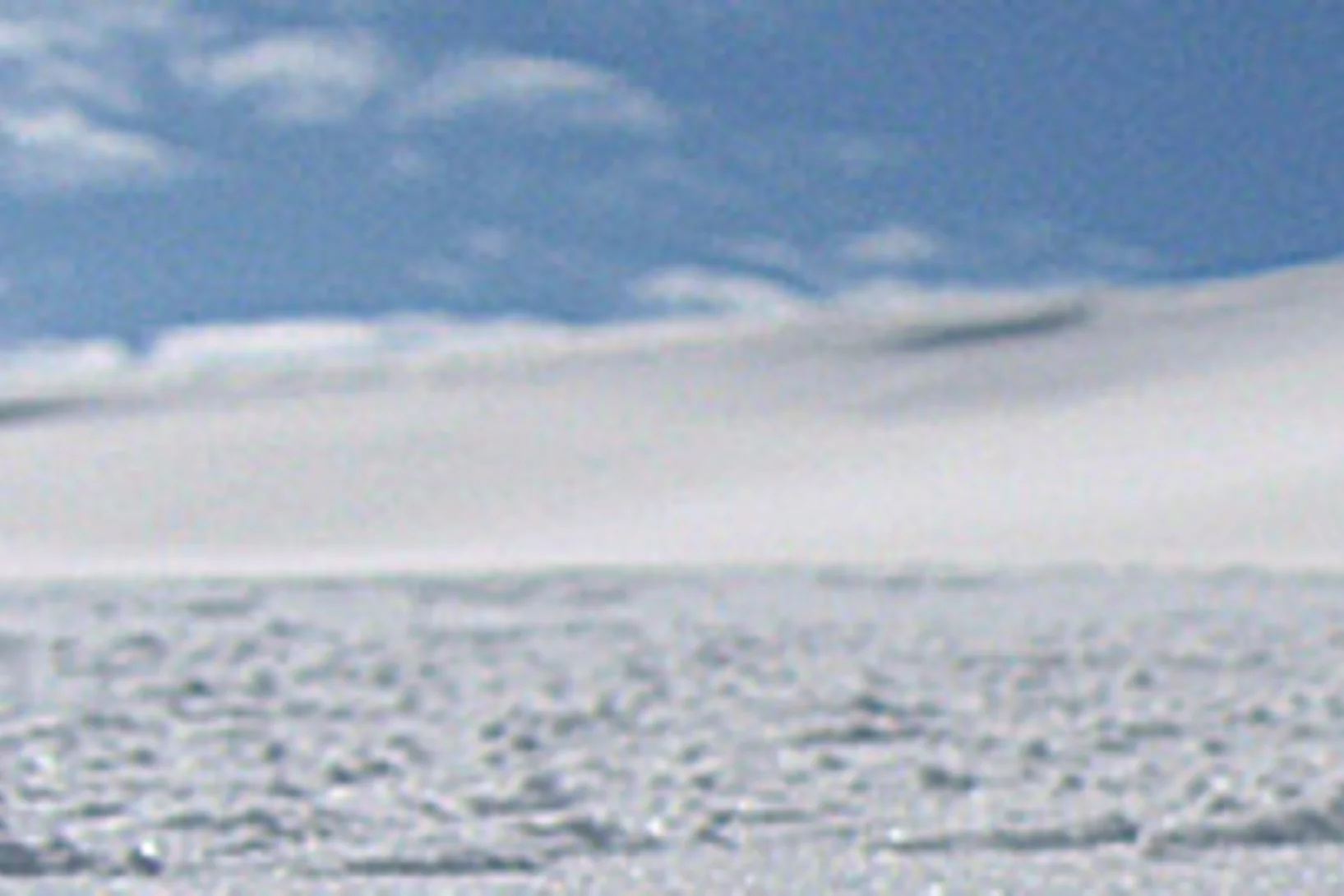Shifting away from nuclear energy, expanding solar and wind power, generating energy from biomass, reducing energy consumption. Switzerland is committed to becoming climate-neutral by 2050. An ambitious goal, which has become more urgent than ever due to the increasingly challenging geopolitical situation. How can a sustainable and resilient energy supply for Switzerland be established over the coming years? What's the optimal way to use renewable energy sources? What new technologies are especially promising? At PSI, researchers are seeking answers to these crucial questions.
Waste incineration: the last word in cleanliness?
Household waste always used to end up left untreated in landfills, and the effects of this practice are well-known: these waste disposal sites were quite often ecological "death zones". With the incineration of municipal waste, there was some mitigation of this problem: despite the overall increase in quantities of waste, the areas claimed by landfill have been limited in recent decades thanks to waste recycling and incineration. However, waste incineration remains far from a panacea. Some combustion products that are already present in the burnt materials or that arise just during the combustion process itself are harmful to human health and the environment and some of them still find their way out of waste incineration plants and into landfill sites as their final destination.
Experiments in millionths of a second
Muons à unstable elementary particles à provide scientists with important insights into the structure of matter. They provide information about processes in modern materials, about the properties of elementary particles and the nature of our physical world. Many muon experiments are only possible at the Paul Scherrer Institute because of the unique intense muon beams available here.
Air quality in the megacity Paris: better than expected
Megacities are often perceived by the public to be major sources of air pollution, which affect their surroundings as well. However, recent studies show that the environmental credentials of cities with over one million inhabitants are not so bad after all. An international team of researchers, including scientists from the Paul Scherrer Institute (PSI), has now confirmed, on the basis of aerosol measurements carried out in Paris, that so-called post-industrial cities affect the air quality of their immediate surroundings far less than might be thought.
The idea-collector
The X-ray laser SwissFEL will provide researchers with novel experimental opportunities for gaining insights into a large variety of materials and processes. But, how do we identify which scientists will benefit most from the facility and in what way the facility should be configured to best meet their needs? Bruce Patterson, the SwissFEL’s idea-collector, explains how this search is done.
Tiny Magnets as a Model System
Scientists use nano-rods to investigate how matter assembles
In the microscopic world, everything is in motion: atoms and molecules vibrate, proteins fold, even glass is a slow flowing liquid. And during each movement there are interactions between the smallest elements - for example, the atoms - and their neighbours. To make these movements visible, scientists at the Paul Scherrer Institute PSI have developed a special model system.
Tiny Magnets as a Model System
Scientists use nano-rods to investigate how matter assemblesTo make the magnetic interactions between the atoms visible, scientists at the Paul Scherrer Institute PSI have developed a special model system. It is so big that it can be easily observed under an X-ray microscope, and mimics the tiniest movements in Nature. The model: rings made from six nanoscale magnetic rods, whose north and south poles attract each other. At room temperature, the magnetisation direction of each of these tiny rods varies spontaneously. Scientists were able to observe the magnetic interactions between these active rods in real time. These research results were published on May 5 in the journal Nature Physics.
Atomic motions untangled
The pursuit of capturing motion in a movie bears an obvious fascination irrespective of the time scales involved. In the atomic and molecular world where the masses are so light and the distances small the relevant time scale shifts to the ubpicosecond range and the motions become frantic especially for larger molecular systems
Atomic motions untangled
The pursuit of capturing motion in a movie bears an obvious fascination irrespective of the time scales involved. In the atomic and molecular world where the masses are so light and the distances small the relevant time scale shifts to the subpicosecond range and the motions become frantic especially for larger molecular systems.
Alternativ-Routen für Velofahrer und Fussgänger
Durch die Bauarbeiten für den SwissFEL kommt es im Würenlinger Wald zu Sperrungen und Umleitungen. Alternativ-Routen für Velofahrer und Fussgänger werden angeboten.This news release is only available in German.
Effect of surface charge density on the affinity of oxide nanoparticles for the vapor–water interface
Using in-situ X-ray photoelectron spectroscopy at the vapor-water interface, the affinity of nanometer-sized silica colloids to adsorb at the interface is shown to depend on colloid surface charge density. In aqueous suspensions at pH 10 corrected Debye-Hückel theory for surface complexation calculations predict that smaller silica colloids have increased negative surface charge density that originates from enhanced screening of deprotonated silanol groups by counterions in the condensed ion layer.
An ultrathin energy storage device made of carbon
For the discovery and characterisation of the miraculous material graphene à a layer of carbon exactly 1 atom thickà two Russian born physicists were awarded the Nobel Prize in 2010 and got a huge amount of media attention. Ever since graphene was first isolated, scientists all over the world have been rushing to find applications. Recently, scientists at the Paul Scherrer Institute PSI laid the foundations for a graphene-based super capacitor. With its help, the lifespan of batteries in hybrid cars could be extended significantly
Beginning of construction in the Würenlingen forest
Construction work for SwissFEL has now started in the Würenlingen forest, and the building for this new Large Research Facility for the Paul Scherrer Institute PSI will be erected during the next year and a half.
Research at SwissFEL: Looking into magnetic materials
Materials with special magnetic properties play an important role in modern technologies à for example, in the hard disc drives used to store data on a computer. Research at SwissFEL will help us to develop new magnetic materials, and to observe the fast processes in these materials as they happen. Thus, we will be able to see exactly what happens inside a hard disc when its data content is modified.
Germanium – zum Leuchten gezogen
Forscher des PSI und der ETH Zürich haben mit Kollegen vom Politecnico di Milano in der aktuellen Ausgabe der wissenschaftlichen Fachzeitschrift "Nature Photonics" eine Methode erarbeitet, einen Laser zu entwickeln, der schon bald in den neuesten Computern eingesetzt werden könnte. Damit könnte die Geschwindigkeit, mit der einzelne Prozessorkerne im Chip miteinander kommunizieren, drastisch erhöht werden. So würde die Leistung der Rechner weiter steigen.This news release is only available in German.
Radiation grafted membranes developed at PSI outlast state-of-the art commercial membranes in the fuel cell
Components for the polymer electrolyte fuel cell (PEFC) are required to show high performance and durability under application relevant conditions. Furthermore, for commercial viability the materials and processes for component fabrication need to be of los cost. The polymer electrolyte membrane developed at PSI on the basis of the radiation grafting technique has the potential of being produced in cost-effective manner. In recent years, we have collaborated with the Belenos Clean Power to further develop the membrane to commercial competitiveness.
On Proton Conductivity in Porous and Dense Yttria Stabilized Zirconia at Low Temperature
The electrical conductivity of dense and nanoporous zirconia-based thin films is compared to results obtained on bulk yttria stabilized zirconia (YSZ) ceramics. Different thin film preparation methods are used in order to vary grain size, grain shape, and porosity of the thin films. In porous films, a rather high conductivity is found at room temperature which decreases with increasing temperature to 120 °C. This conductivity is attributed to proton conduction along physisorbed water (Grotthuss mechanism) at the inner surfaces.
Memory effect now also found in lithium-ion batteries
Lithium-ion batteries are high performance energy storage devices used in many commercial electronic appliances. Certainly, they can store a large amount of energy in a relatively small volume. They have also previously been widely believed to exhibit no memory effect. That’s how experts call a deviation in the working voltage of the battery, caused by incomplete charging or discharging, that can lead to only part of the stored energy being available and an inability to determine the charge level of the battery reliably. Scientists at the Paul Scherrer Institute PSI, together with colleagues from the Toyota Research Laboratories in Japan have now however discovered that a widely-used type of lithium-ion battery has a memory effect. This discovery is of particularly high relevance for advances towards using lithium-ion batteries in the electric vehicle market. The work was published today in the scientific journal Nature Materials.
The golden way to choke harmful exhaust gases
Exhaust gases produced by diesel combustion are freed from harmful nitrogen oxides with the aid of an aqueous urea solution. That’s the state of the art. The urea decomposes into ammonia and this, in turn, reduces the nitrogen oxides into harmless nitrogen. However, the urea solution can produce undesirable solid residues and, in addition, freeze in extremely cold weather. Now researchers at the Paul Scherrer Institut (PSI) have developed a catalyst which can be used with better reducing agents than urea for nitrogen oxide reduction.
X-ray Laser: A novel tool for structural studies of nano-particles
Prominent among the planned applications of X-ray free electron laser facilities, such as the future SwissFEL at the Paul Scherrer Institute, PSI, are structural studies of complex nano-particles, down to the scale of individual bio-molecules. A major challenge for such investigations is the mathematical reconstruction of the particle form from the measured scattering data. Researchers at PSI have now demonstrated an optimized mathematical procedure for treating such data, which yields a dramatically improved single-particle structural resolution. The procedure was successfully tested at the Swiss Light Source synchrotron at PSI.
Observing Engine Oil Beneath Metal
Developmental Engineers from the firm LuK (D) wanted to see right through the metal housing of a clutch. They wanted to observe how the oil that lubricates and cools a clutch is distributed. A transparent disc becomes dirty very quickly, and X-rays merely reveal the metal. These engineers therefore turned to scientists at the Paul Scherrer Institute, who illuminated the metal with neutrons and thus made the lubricating oil visible. The results surprised everyone: only three of the eight lamellae were sufficiently lubricated.
Applications of laser printing for organic electronics
The development of organic electronic requires a non contact digital printing process. The European funded e-LIFT project investigated the possibility of using the Laser Induced Forward Transfer (LIFT) technique to address this field of applications. This process has been optimized for the deposition of functional organic and inorganic materials in liquid and solid phase, and a set of polymer dynamic release layer (DRL) has been developed to allow a safe transfer of a large range of thin films.
Electric-Field-Induced Polar Order and Localization of the Confined Electrons in LaAlO3/SrTiO3 Heterostructures
With ellipsometry, x-ray diffraction, and resistance measurements we investigated the electric-field effect on the confined electrons at the LaAlO3/SrTiO3 interface. We obtained evidence that the localization of the electrons at negative gate voltage is induced, or at least enhanced, by a polar phase transition in SrTiO3 which strongly reduces the lattice polarizability and the subsequent screening. In particular, we show that the charge localization and the polar order of SrTiO3 both develop below ∼50 K and exhibit similar, unipolar hysteresis loops as a function of the gate voltage.
Soft x-ray photoelectron spectroscopy on buried complex oxide interfaces: a new method to diagnose authentic protected electronic structures
Exotic phenomena at interfaces of complex oxides are highly promising for future solid-state electronics applications. A prominent example is the interface of two wide band gap insulators formed by growing a LaAlO3 layer on TiO2-terminated SrTiO3 substrate. When the LaAlO3 thickness exceeds 3 unit cells this system undergoes a sharp insulator-to-metal transition with a two-dimensional electron gas (2DEG) appearing at the interface.
From methane to methanol - or how to extinguish the torches of waste
In nighttime photographs taken from space, the large cities of the world can easily be recognised by the flood of their public lighting. However, probably only the trained eye is able to see, as well as New York or Tokyo, the locations of many oil-producing wells . The light in these cases originates mainly from the combustion of methane. This huge waste of an energy-rich gas has devastating economic and ecological consequences. Reasearchers at the Paul Scherrer Institute PSI are looking for a solution: the conversion of methane into the liquid energy carrier methanol
Scenarios for the transformation of Switzerland's electricity system
Researchers in the Energy Economics Group at the Paul Scherrer Institute PSI have used their model of the Swiss electricity system called STEM-E to analyze various electricity supply scenarios. They have concluded that alternatives to today's electricity supply are associated with different costs, risks and opportunities. Realising sustainability objectives such as climate protection while phasing out nuclear generation and making Switzerland's electricity supply independent of foreign countries raises many challenges. Furthermore, their analysis suggests that costs of electricity production are likely to increase by at least 50 percent by 2050
Magnetic Cluster Excitations
Magnetic clusters, i.e., assemblies of a finite number (between two or three and several hundred) of interacting spin centers which are magnetically decoupled from their environment, can be found in many materials ranging from inorganic compounds and magnetic molecules to artificial metal structures formed on surfaces and metalloproteins.
The advantages of SwissFEL: Why a laser?
SwissFEL will produce very short, intense pulses of X-ray light with laser-like characteristics. These characteristics will make it possible to elucidate the exact structure of molecules, for which only a fuzzy picture, at best, can be obtained using "normal" light.
A new generation of lithium batteries is approaching industrial implementation
Lithium-ion batteries are one of today's best technologies for storing electrochemical energy. They have a high energy density and specific energy and a sufficiently long lifetime to allow them to be used in microelectronic devices and cars. The commercial rise of Li-ion batteries in the last two decades is impressive. However, further improvements are possible and this is a field in which researchers at the Paul Scherrer Institute (PSI) are working. Nevertheless, the potential of the Li-ion battery is limited chemically and it will only be possible to achieve an even higher energy density, which is crucial for electric mobility in particular, by using other new types of batteries.
A green light for SwissFEL
The completion of all required approvals gives a green light for the construction of SwissFEL, the new large research facility at the Paul Scherrer Institute PSI.
The great unknowns of ice and snow
Ice and snow have fundamental significance for our climate. Generally speaking, one assumes that science knows everything that is important about such everyday phenomena. Yet, as soon as one looks at the whole at the molecular level, many questions remain unanswered. This knowledge is essential for predicting the future of our planet. Thorsten Bartels-Rausch in an interview about the great unknowns.


